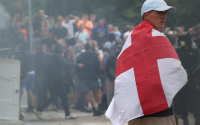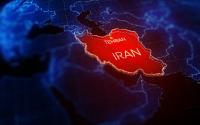Independent20 March 2010
If you want to know how brutally Pakistan treats its people, you should meet Amina Janjua. An intelligent painter and interior designer, she sits on the vast sofa of her living room in Rawalpindi – a room that somehow accentuates her loneliness – scarf wound tightly round her head, serving tea and biscuits like the middle-class woman she is. And although neither a soldier nor a policeman has ever laid a hand on her, she is a victim of her country's cruel oppression. Because, five years ago, her husband Masood became one of Pakistan's "disappeared". It is a scandal and a disgrace and, of course, a crime against humanity. Ask not where Masood Janjua has gone – Amina does ask, of course, all the way up to the President – for he has entered that dark world wherein dwell up to 8,000 of Pakistan's missing citizens, men, for the most part, seized from their homes or from the streets by cops and soldiers on the orders of spies and intelligence agents and Americans since 11 September, 2001. In Lahore alone, there are 120 "torture houses" just for the missing of the Punjab. Their shrieks of pain from the basements could be heard by residents – who complained only that the buildings might provoke bomb attacks. In Pakistan today, preservation counts for more than compassion. Masood Janjua was 44 when he was "disappeared" on 30 July 2005. He ran an IT college and a travel agency, the father of two boys – Mohamed and Ali, and a girl, Aisha. He just never came home. Nobody saw what happened. Amina, who was 40 at the time, glows when she speaks of him. "We were so extremely close, so happy, our world was so heavenly – we were always visiting friends, having parties at home. He was so caring and kind to our children, so affectionate. That he should be taken from me! I think it was a very big mistake that they did. But when they do it – like this – they never say they were wrong." "They". Everyone I talk to here talks about "they". Many refuse to talk in case it provokes "them" to undertake a quick execution. "They" is the Inter-Services Intelligence. "They" is military intelligence. "They" are the Americans, some of them present – according to the few "disappeared" who have been released – during torture sessions. The Defence of Human Rights Pakistan (DHRP), the movement which Amina founded with 25 other bereft families, has gathered evidence of English-speaking interrogators who calmly ask victims questions during their torment. Ironically, Amina lives in a military district of Rawalpindi, beside an old British barracks, where US soldiers are observed in Pakistani uniforms – sometimes female American soldiers dressed, so she says, in the uniforms of Pakistani military paramedics. Even more ironic was the first word she had of her husband after he disappeared. "When I went to the Supreme Court to demand his return, witnesses came forward to say they saw Masood inside an army barracks here in Rawalpindi, very close to his family. Just think – it was within walking distance from our home! He was inside a cell at 111 Brigade barracks. It was so sad for me – it was as if they were being cynical, to keep him so close to his family." Amina Janjua found that one of the court witnesses lived in Peshawar and she travelled to the North West Frontier Province to speak to him five months after her husband disappeared. "He had been in the army facility in Rawalpindi. The prisoners were kept in solitary confinement and only when they were taken to the lavatory did they come close to other prisoners. They were forced to wear big hoods – hoods that went right down and covered their shoulders – and the detainees would get no chance to talk to another human being. This man said my husband was there – he even heard the guard call him 'Janjua'." There is evidence that Pakistan's "disappeared" are moved around, between barracks and interrogation centres and underground torture facilities in different towns and cities. There are also terrible rumours – fostered, some say, by the security authorities – that the army has thrown detainees from helicopters, that the cops dispose of bodies at night by dumping them in swamps or in open countryside so that decay and animal mutilation will cover the marks of torture before the bodies are found. But Amina Janjua believes most of them are alive. You might say she has to believe that. "After 9/11, everyone was worried. People were ruthlessly disappeared after the New York attacks. No one knew why their loved ones were taken. The first few months were like hell for me. Then I regained my consciousness and said I could not accept all this. I said I would fight. I said I would get my husband back." Brave words. Brave lady. So she turned to the only brave institution still fighting in Pakistan: the lawyers and the judges and the courts. So far, the Supreme Court in Islamabad and the Lahore High Court have squeezed around 200 detainees out of the maw of the country's security apparatus – those, that is, who were still in Pakistan. Many are known to have been freighted off to the tender mercies of the Americans at Bagram in Afghanistan, where Arab detainees have long ago testified to being beaten and sodomised with broom sticks. There have been prisoner murders, too, in Bagram, the jail that President Barack Obama refuses to close. "At the beginning, I went to the International Red Cross about Masood," Amina Janjua says. "I saw them over several months. There was no progress. My father-in-law went to many people, he even went to President Musharraf – he trained in the military with Musharraf and they knew each other very well – and Musharraf said, 'I will do something for you'– but he never did. After that, when we called the President's house, they would start avoiding us. We wrote to all the Pakistan intelligence agencies. All said my husband could not be found." Many families have been given false hopes. "In some villages way out in the country," Amina recalls, "families were told by the authorities that their sons were coming home. These were poor people but they were so happy, so delighted. They would hold a party and give out sweets and slaughter valuable animals to show their happiness. But then the sons didn't come home. Can you imagine treating people like this?" Amina Janjua's fraudulent hope came in a phone call in 2006, a year after Masood's disappearance. "We had our first breakthrough when the military secretary of the President called Masood's father to say that his son was alive and that they had heard about him, though he had been ill – in a fever. That was our first sign of relief. "Then he started avoiding us again. There was no message after that. Then we were told 'No, he is not with us, but we are making every effort because the President has made this request to help you.' I went on asking senior people in the army what had happened to my husband, and they – I put it like this – they started shivering. They would shudder. They could not disclose any information." Teaching herself law and fighting her own case, Amina Janjua returned to the Supreme Court. "When I did this, I started hearing of many other cases and things that are happening. And that's when I realised. It's not about 'missing' people – this is about abduction. I started organising files on these abducted people and eventually I had 788 families on my list and I started conducting research. And we got about 200 prisoners released. The courts ordered this. They were all still in Pakistan. Others, we know, had been taken to Bagram, three or four to Guantanamo Bay where at least we knew they were alive." But Amina's research could prove terrifying. She discovered not only that abducted men were alive. They were also dead. "I suspected some of them had died," she said. "I know of three prisoners who are dead. One was Mohamed Shafiq; he was a coach driver and they released his death certificate – it said he died of 'some illness'. He was in his 40s. One of the prisoners, a businessman called Said Menon, died shortly after he was released. "All of the 200 we got released had been tortured. Initially, it was very ruthless – they were not allowed to sleep; there were beatings and thrashings; they were hanged upside down. There was loud music. There were actual torture rooms where the things were done to them. The prisoners told us they didn't think their torturers were human beings at all. The faces of the torturers, they said, were horrifying. It was no longer a real world for them. The torturers seemed so powerful, like monsters, so big." The questions they were asked were repetitive, according to Amina Janjua. Where are the guns? Where are the weapons? Where is Mullah Omar? Two prisoners described to Amina's committee how they were made to wear orange jumpsuits, shaven till they were bald and taken for questioning to Islamabad. "They were interrogated by foreigners – they could see them. They were English-speaking. They didn't know if they were Americans or British." The DHRP now holds public protests in all the cities of Pakistan where the prisoners have their homes – in Lahore, Sagoda, Quetta, Faisalabad, Karachi, Peshawar – but the families focus on Islamabad where they demonstrate their fury and their anguish outside the Supreme Court and the offices of President Asif Ali Zardari and the Prime Minister, Yousuf Raza Gilani. The DHRP files show that there are 1,700 missing from Baluchistan alone. At least 4,000 appear to be in the hands of the Pakistani interior ministry, while 2,000 have been handed over to what the DHRP describes as "foreign agencies" – usually, the Americans. Perhaps 750 of the missing Pakistanis are believed to have been taken by the Americans – illegally, of course – to Bagram, the Policharki prison outside Kabul, or to Herat in western Afghanistan.






